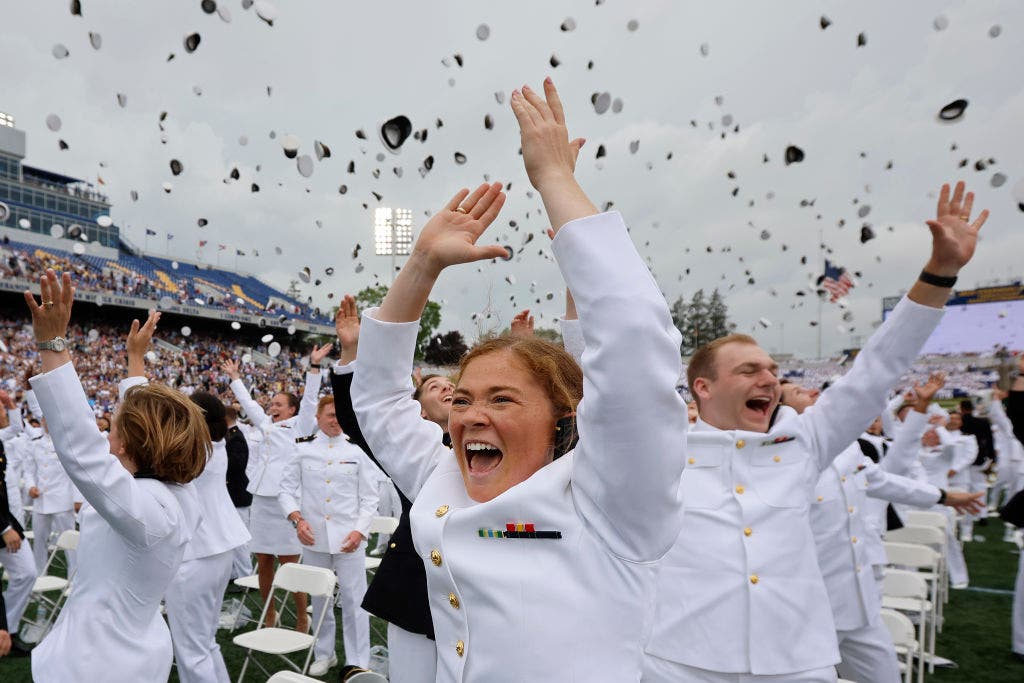The U.S. Naval Academy was established in Annapolis, Maryland in 1845, following a scandal involving a planned mutiny on the U.S. Navy brig Somers. Three sailors, including the 19-year-old son of Secretary of War John Canfield Spencer, were executed at sea for their involvement in the mutiny, sparking national controversy. The subsequent creation of the academy highlighted the need for a rigorous program to educate and train professional Naval officers. Initially established as the Naval School with 50 midshipmen and seven professors, it later became the Naval Academy with a full four-year course of study supplemented by summer training at sea.
The Naval Academy has produced a distinguished list of graduates who have excelled in various fields, including high-seas heroes, space explorers, and global leaders. Notable alumni include Fleet Admiral Chester W. Nimitz, President Jimmy Carter, and NASA astronaut Alan Shepard. The school has also produced numerous chairs of the Joint Chiefs of Staff, Marine Corps Commandants, astronauts, and Medal of Honor recipients. The academy’s curriculum includes a focus on mathematics, navigation, gunnery, steam engineering, chemistry, English, natural philosophy, and French. The goal is to prepare students to become proficient Naval officers and leaders.
Midshipman Philip Spencer’s actions aboard the Somers, which led to the academy’s establishment, were seen as brazen insubordination and a threat to naval discipline. He was conspiring with members of the crew to seize the ship, murder the officers, and engage in piracy. Captain Alexander Slidell Mackenzie ordered the executions of three mutineers without trial by court-martial, which sparked controversy and outrage. Mackenzie, a respected author and historian, faced criticism for his decision but was ultimately acquitted by court-martial in 1843. The incident cast doubt on the practice of sending midshipmen directly aboard ship for training.
The execution of the mutineers at sea underscored the importance of maintaining discipline and order within the U.S. Navy. Secretary of the Navy George Bancroft established the Naval School at Fort Severn to provide a comprehensive education for future Naval officers. The academy’s curriculum evolved over the years to include a four-year course of study with summer training at sea. The Naval Academy has produced a legacy of distinguished graduates who have made significant contributions to the military, space exploration, and leadership on the global stage.
The scandal involving the Somers mutiny ultimately led to the establishment of the U.S. Naval Academy, which has played a crucial role in training and educating generations of Naval officers since its founding. The academy’s emphasis on discipline, leadership, and professional development has produced a legacy of successful graduates who have excelled in various fields. The Naval Academy continues to uphold its mission of preparing future leaders for service in the U.S. Navy, emphasizing the values of honor, courage, and commitment. The academy’s founding principles and dedication to excellence have shaped the careers of countless Naval officers throughout history.


